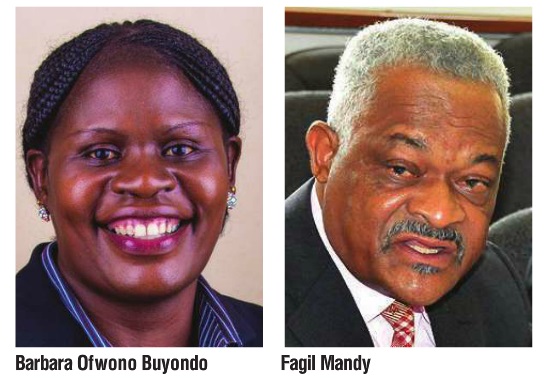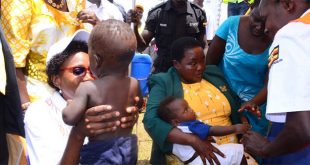Will institutionalising nursery school education overturn the appalling learning deficit?

It’s about 6:30 pm. Most workers are heading home after a long day; not yet for the three men working at this construction site at Lusanja inWakiso District.As they carry bricks and piles of concrete with an obvious gait in their stride, the sweat on their bodies glitters in the sunset sunlight.
The site belongs to Emmanuel Kabuuka, who owns a two block kindergarten, but is building an extension to create more space for more infants. He keeps yelling out instructions to the workers to speed up. “We don’t have a lot of time. School opens on Monday,” he says, with a sense of urgency in his voice. Though he conceals the exact number of children attending Malmo Baby School, Kabuuka says his business is picking up having opened two years ago in this upcoming residential area.
Kabuuka is following the footsteps of many other entrepreneurs who are increasingly venturing into the lucrative Kindergarten and nursery school business. By 2012, there were 7,368 nursery schools from just 703 in 2007. Providing this initial part of education known as Early Childhood Development (ECD) has historically been a preserve of the private sector as the government has kept off, focusing instead on the higher levels of education.
In fact, an ECD policy launched in 2007 classifies kindergarten as a mantle for individual providers. Because of this, what happens at these facilities is mostly determined by the proprietors right fromwhat is taught, the kind of teachers employed, methods of instruction, co-curricular activities, and duration of the level among others.
Barbara Ofwono Buyondo, the proprietor of Victorious Education Services, which has a long experience in such education, says when choosing teachers they look out for those who are passionate about nurturing the next generation.
Traditionally, infants were cared for by their mothers until they are old enough to go to school. Buyondo says they have come in to offer an alternative as mothers are also increasingly going out to work and pursue their careers. Even though nursery education is somehow new in Uganda, the demand has been growing and it seems to be yielding results, according to a new study titled, ‘Are our Children Learning?’
The study was compiled by Twaweza, an NGO that also works in Kenya and Tanzania, as part of its Annual Learning Assessment series. It indicates that Primary Three pupils who attended Kindergarten were three times (25%) more likely to read a Primary Two level story than those who didn’t (8%).
Launched on June 01, findings of the research conducted in 17,340 households across the country, also show that children who attended Kindergarten were more likely to enter Primary School at the correct age of six years than their counterparts who didn’t. At least 63% of those who attended Kindergarten were in Primary One at age six; only 51% of those who didn’t attend nursery school were in P.1 at that age.
The researchers assessed 28,147 children and visited 860 schools. Generally, results indicate learning outcomes remain very low with only 13% of the children in Primary Three being able to read a Primary Two level English story correctly and also solve a Primary Two level division task. Some 26% of the children cannot read and solve the same division exercise at Primary Seven. Reluctance by parents to lay the proper foundation for the children by investing in early childhood education appears to come back to haunt them in later years.
Some 90% of Primary Three pupils were unable to read a Primary Two level story in their local language and 69% couldn’t read the same story at Primary Seven, which could be an indication that most of the instruction is given in English at the expense of local languages.
However, even as results of the report portray the nursery school as a solution to these poor learning outcomes, this stage of school remains the preserve of a few. There is a yawning rural-urban chasm in terms of access and variable quality in provision.
In fact, the report shows only 19.5% of children in rural areas attend pre-school.
Even in urban areas where many nursery schools and Kindergartens are available, the right schools that can attend to the child’s basic educational needs are only affordable to the well to do.
At Buyondo’s Victorious Kindergarten, a child in middle class pays Shs 850,000 as school fees – slightly more than the monthly salary of a starting medical doctor or banker.
For some schools, in addition to high tuition, the parent incurs other expenses such as buying reams of paper, brooms, toilet rolls, swimming fees, several pairs of uniforms and shuttle fees.
At Kabuuka’s semi-urban Malmo Baby School, parents must part with Shs 500, 000 as basic tuition fees per term per child but have to pay for the other requirements as well.
At rudimentary nursery schools, which are most times housed in temporary structures, the owners being mainly driven by profit motives, usually admit all the children that apply and hire teachers with the intention of training them on the job. Such facilities are usually not officially recognized by local authorities leave alone registered. And, whatever happens in these centers tends to escape official attention because the government is not directly involved in ECD.
 The Independent Uganda: You get the Truth we Pay the Price
The Independent Uganda: You get the Truth we Pay the Price



